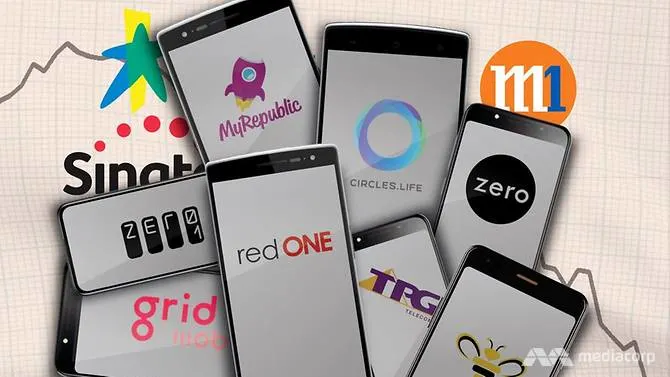The Big Read: Singapore's big telcos face rude awakening, as the little guys get the last laugh
08 July, 2019

Back in 2016, the three major Singapore telcos - Singtel, StarHub and M1 - held various meetings with investors and shareholders, reassuring them that a fourth telco would not be a threat to their businesses.
They told the market that it is not a problem, two analysts recalled. The incumbents had felt that if a new competitor appears, it will be an uphill climb to deliver the same quality of services as them.
At least one of the telcos was unconvinced that there would be any serious push to respond to the regulator’s call for proposals earlier that year, believing that there was no business case for a fourth telco.
“That was the thinking then: It already was a crowded market and the telcos believed they didn’t need to do anything. Whatever price the fourth telco offers, they will undercut it to kill off the competition,” one analyst said on condition of anonymity.
So when the regulator, the Infocomm Media Development Authority (IMDA), granted Australia’s TPG Telecom the right to become the fourth telco in December 2016 - loosening the market for the first time in 15 years - the incumbents appeared unfazed.
But the telecommunications landscape today is far from the oasis of stability that the three telcos had portrayed to investors back then.
There are now 11 telcos in Singapore, including the mobile virtual network operators (MVNOs) that have since flooded the scene. Two - Grid Mobile and redONE - were announced in the past month.
Unlike the main telcos, MVNOs do not own and operate any network infrastructure and have to lease it from either Singtel, M1 or StarHub at a cost.
Knee-deep in a price war even before TPG has launched its full commercial services, the three incumbent telcos have seen their profit margins erode in recent years.
Total mobile service revenue shrank 5.3 per cent in 2018. Industry leader Singtel’s group earnings before interest, taxes, depreciation and amortisation fell by 7 per cent in the 2018 financial year compared with the previous year, while StarHub’s service earnings fell by 11.1 per cent and M1’s shrank by 3.7 per cent.
Right now, Singapore consumers are enjoying a variety of telco offerings at low prices like never before.
But with mobile revenues set to decline at a steeper rate for at least two more years, shareholder values and the jobs of many telco workers here could take a hit.
By all accounts, the industry is now rife with talk of market consolidation - the question is whether all the three incumbents will be spared the chopping block.
How did the telco industry, which had enjoyed near monopolistic status in the past, arrive at this stage?
The answer, analysts say, is a complicated one marked by missteps and mistimed opportunities in the telcos’ efforts to transform themselves, and also because Singaporeans are now less willing to pay for data as before.
PAYING LESS FOR DATA
Every month, Madam Yvette Yeo pays around S$60 for her mobile phone line and those of her two daughters, while her husband, who manages his own bills, pays around S$90 for four lines used by his multiple devices - his main phone, a secondary one, an Apple iPad and a laptop.
It is a sign of how gadget-crazy Singaporeans are - a fact that analysts say had propped up the telco industry in previous years as consumers were more willing to spend more on their phones. The mobile population penetration rate in Singapore is at around 150 per cent, while wireless broadband penetration is at around 190 per cent.
TAG(s):
